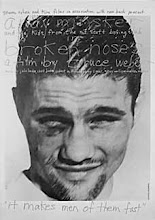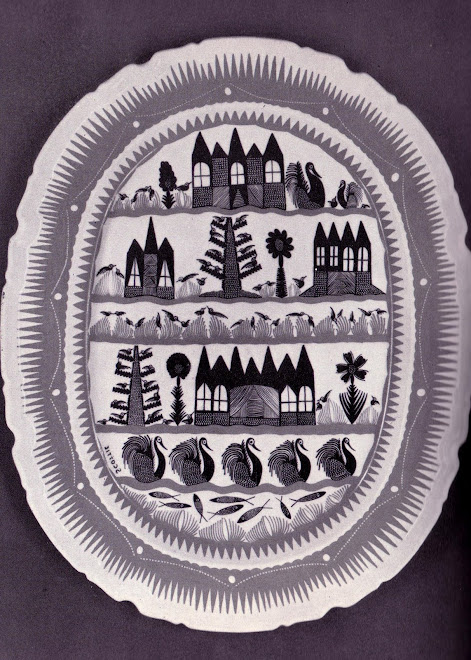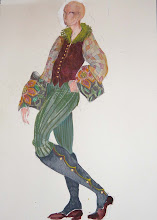
Of all his enduring images, Eric Ravilious' 'Wilmington Giant' of 1939 remains perhaps my favourite of the series of watercolours he executed during the decade before the outbreak of the Second World war. The giant figure, reputed to be the largest representation of the human form on earth, is one of a series of prehistoric chalk figures cut into the turf of chalk hillsides in Southern England, notable in Dorset and, in this instance, on Windover Hill near Eastbourne in Sussex. The image of the Long Man of Wilmington first appeared in Ravilious; work in a 1929 engraving, and initially conceived it as a female figure opening the doors of death. In later works on the Wilmington Giant, it has been suggested rather that the male figure is a representation of Saturn opening the Gates of Day, the uprights that we popularly construe as twin staffs, originally intended by his creators to represent the perimeters of the doors of Heaven.
Ravilious initially intended his series to form the basis of a children's book on Chalk FIgures for the Puffin series; once can only imagine how striking an addition such a book would have proved. The painted series also included The Cerne Giant, the Wiltshire Westbury Horse (which he painted on two occasions, one where it is glimpsed through the window of an expertly-rendered train carriage, the other from the top of Westbury Hill, immediately below the Iron Age hill fort of Bratton Camp, a diminutive train in the distance) and also the Weymouth and Osmington horses, all three of 18th-century in origin. He he also undertook a hugely atmospheric depiction of the Uffington Horse in Berkshire, where the figure is depicted at a distance through fields of waving grassland, which somehow renders the reality of its true scale as almost illusionary, yet no less powerful.
Having been brought up in Eastbourne, and so closely associated with the town, Ravilious remains perhaps the most consumate portrayer of the surrounding Downland landscape, and- in the twentieth century at least- is the artist most closely associated with it. Instinctively-attuned to its contours, his dry, economical brushwork tangibly rendered the enormity of the Sussex landscape in a manner in which no other artist has successfully achieved, and solely devoid of humanity (one is at odds to discover any signs of population in these images), the very paucity of paint, and the relative expanse of visible paper on which the work was made, gives Ravilious; downland series the quality that Christopher Neve terms as 'irrisistable dryness'. In his essay 'Ravilious and Lightheartedness', which appears in his masterful collection of essays 'The Unquiet Landscape (Faber & Faber, 1990), Neve particularly cites Ravilious' image of the Wilmington Giant, and suggests that there are elements within the painting which cold be construed as a presaging of the conflict to come, particularly in terms of the heavy cumulus clouds that swirl around the apex of Windover Hill, the dark and shadowy rendering of the dip in which the figure is situated and- perhaps most of all in the string of barbed wire which cuts dramatically across the picture plane as a portent of the oncoming war. Given this, there is somehow a strong sense of defiance present in Ravilious' entire series of Hill Figure paintings, whilst elements contained within them serve to remind us all-too acutely of the artist's own eventual fate, disappearing as he did over the storm-laden skies of Iceland in his role of Official War Artist. Let it be noted, however, that there is a patch of hopeful blue in the sky above the Long Man, and undoubtedly, Ravilious would have intended this to be understood and interpreted as such.





























































